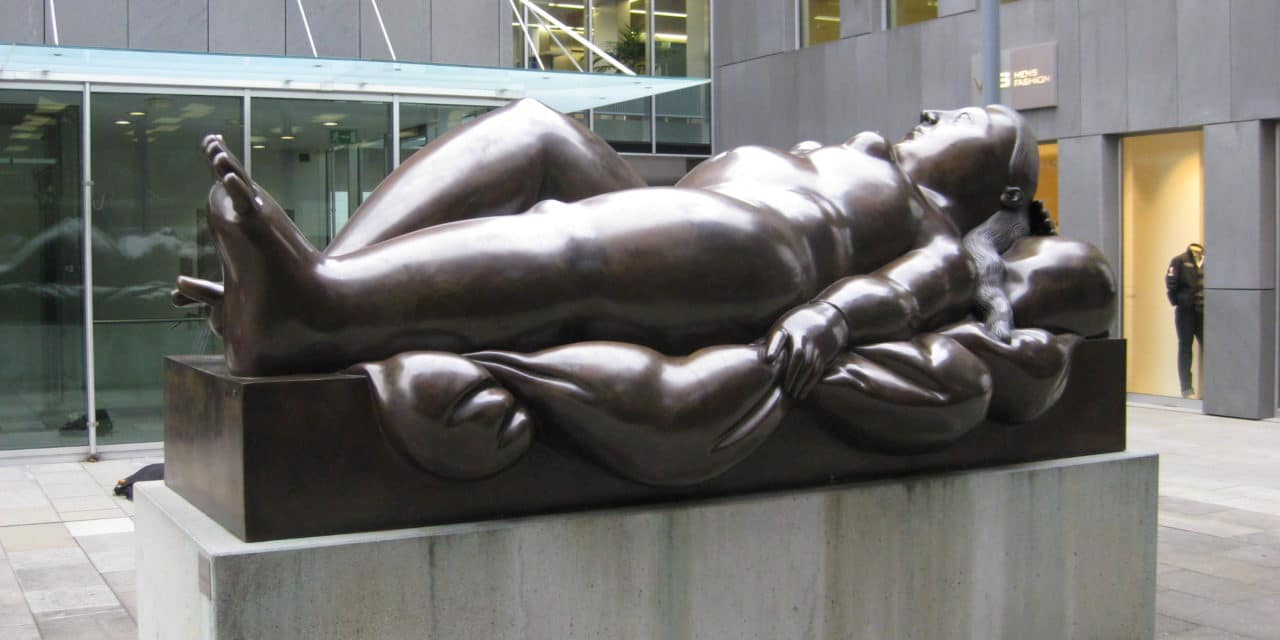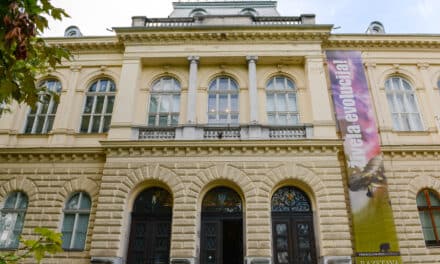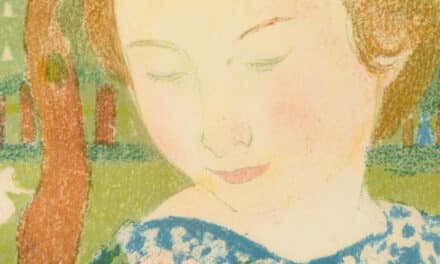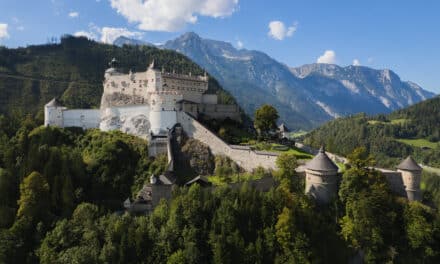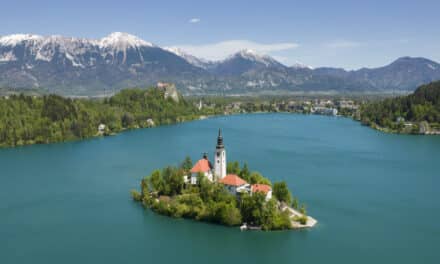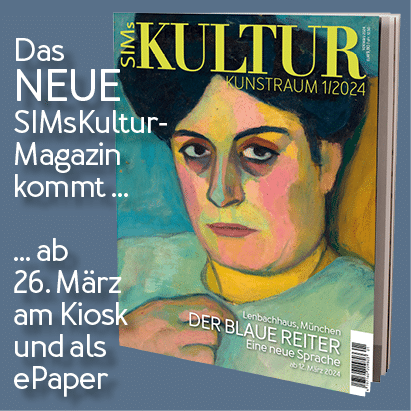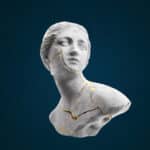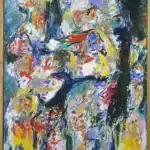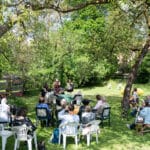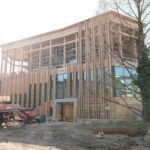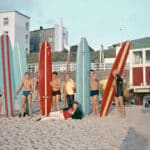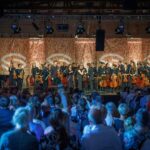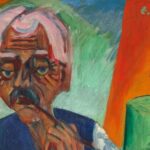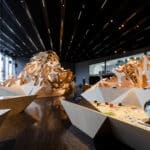If you have an eye for it, you will notice a multitude of sculptures by world-famous sculptors as you stroll through Vaduz.
African King by Gunther Stilling
Stilling devotes a large part of his work to the human head. His sculptures are given an additional dimension through sharp incisions, layering and geometric additions. The "non finito" in his works, the fragment, the alternating rough and smooth surfaces visualize transience, power and violence with their fissures.
"Figure in a Shelter" by Henry Moore
The sculpture "Figure in a Shelter" by Henry Moore was created just a few years before the artist's death and illustrates both the formal model of the inner and outer form as well as the basic motif of the sheltered and at the same time protecting human figure. The shelter forms have different dimensions and contours. The figure stands in the opening of the protective space, whose preferred side of view shows a few female motifs. The interpretation as a maternal woman is obvious, although Moore has dispensed with the embodiment of a child and only the swaying movement of the large diagonal fold in front of the body hints at his recurring mother and child theme.
Grande Cavallo by Nag Arnoldi
Nag Arnoldi's expressive bronzes show influences from Marino Marini and Pablo Picasso, but also from pre-Columbian art. His works have a clear identity. The uniqueness of the structure of the broken cast surface stands in stark contrast to the polished surfaces in places. Light, reflection and immaterialization play a very important role. The theme is the myth of horse and man, portrayed between joy and pain.
High seat by Robert Indermaur
The high seat is a constantly recurring metaphor in Indermaur's work for situations that require an overview. He is concerned with the human urge to comprehend and understand. It is about gaining an insight into the connections of this world and this society from a special vantage point; connections that are not visible from the comfort of an armchair in front of the TV. And it is about facing this world as an attentive and empathetic observer and at the same time as a meditative processor of what we experience and see. The "high seat" is therefore actually a basic philosophical position.
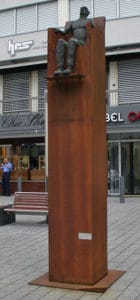
High seat by Robert Indermaur
"Monoform 29" by Gottfried Honegger
"Monoform 29" from 1991 is a major work by the artist Gottfried Honegger, which he himself describes as a positive testimony to 20th century sculpture. The dark granite sculpture is 300 cm high. It consists of six identical elements, each 50 cm high and each rotated by 15 degrees.
Phoenix by Doris Bühler
Doris Bühler on her work: "As a visual artist, I am most interested in people as such. The human body in its strength and beauty is what captivates and occupies me in an outstanding way. I always try to wrest its deepest secrets from nature and express them through my works. As birds were always the first to appear after the Nile flood, the Egyptians associated Phoenix with Osiris, who renewed himself every year. The firebird symbolizes eternal life, resurrection and life after death."
Progression of a form in 3 steles by Christian Megert
The 3 stelae on the town hall square in front of the town hall in Vaduz are made of South African granite.
The shape is based on the ancient Egyptian symbol "ka": a symbol of eternal life and permanence. The sculpture, which is open on all sides and reflects its surroundings, is a landmark and a place to linger. The location and arrangement of the 3 stelae refer to the importance of openness between Liechtenstein, Austria and Switzerland.
Reclining Woman by Fernando Botero
The sculpture, which depicts a reclining female nude in a figurative style as a symbol of the sleeping soul, is in the tradition of monumental sculpture and was therefore created for outdoor use.
"Art is always an exaggeration of reality, its color, its form, its spiritual meaning," says Fernando Botero when asked about the sprawling forms of his figures, which define both his paintings and his sculptures. In his works, Botero visualizes the sensuality, beauty and fertility of women.
Renaissance by Daniel Spoerri
The bronze sculpture "Renaissance" from 1985 only exists in three casts, one of which is in the Fondation Picasso in Antibes and the second in Daniel Spoerri's Giardino in Tuscany.
This work is very typical of the artist and his expressiveness. Found objects, consisting of a twisted Renaissance column made of wood, a hand, a heart and an angel's head, are brought together to form a unity through the bronze casting. The Renaissance, the beginning of the modern era, thus also allows the viewer a new, unique interpretation of this work. An earthquake provided the impetus for the theme: the column with its supporting function - a symbol of everything built, whereas the Sicilian earth was exposed to the violent destruction of the earthquake. And a symbol of the rebirth of the destroyed city of Giballina.
Swiss Fountain by Roman Signer
The Swiss Fountain, a gift from the Association of Swiss in Liechtenstein, is not a fountain in the traditional sense, but rather a sculptural installation that works with water.
In his work, Signer shifts the emphasis of the perception of water from the visible to the audible, thereby reducing the experience to the individual. There is also a reference to the local situation through the opening of the steel walls in the middle.
Standing figure by Herbert Albrecht
Albrecht's work has to do with the theme of the figure, its transformation through different perspectives. The experience of cubism, but also that of classical and pre-classical sculpture, as can be seen in individual pieces, plays a major role for him. Although Albrecht started out from the block and cube, he has moved away from this position. From the elementary body landscapes with differentiated forms shifted into one another, which sometimes take on a vegetative character and obey a complicated light direction. Albrecht is like a dancer here who makes you forget the weight.
Z-cube by Georg Malin
Georg Malin has been working with cubes for two decades. The cubes studded with letters develop from small polished bronzes.
These letter formations can be up to five meters high, yet they still encircle the cube.
Two light prisms by Heinz Mack
The two triangular steles are made of colored, specially vaporized glass, which changes its appearance in a variety of ways depending on the changing light conditions and the position of the viewer. The glass sculptures reflect the entire surroundings, resulting in changes and refractions. The steles document a new, different reality at a central location in Vaduz. "They are the dreams that one dreams when light sleeps with matter." (Quote from Heinz Mack)

